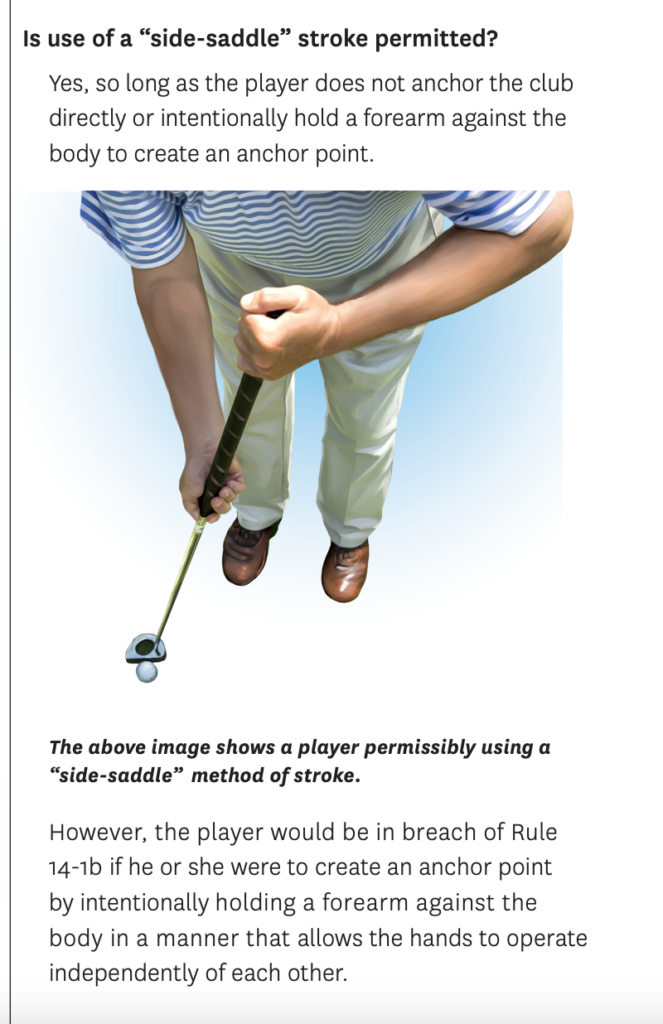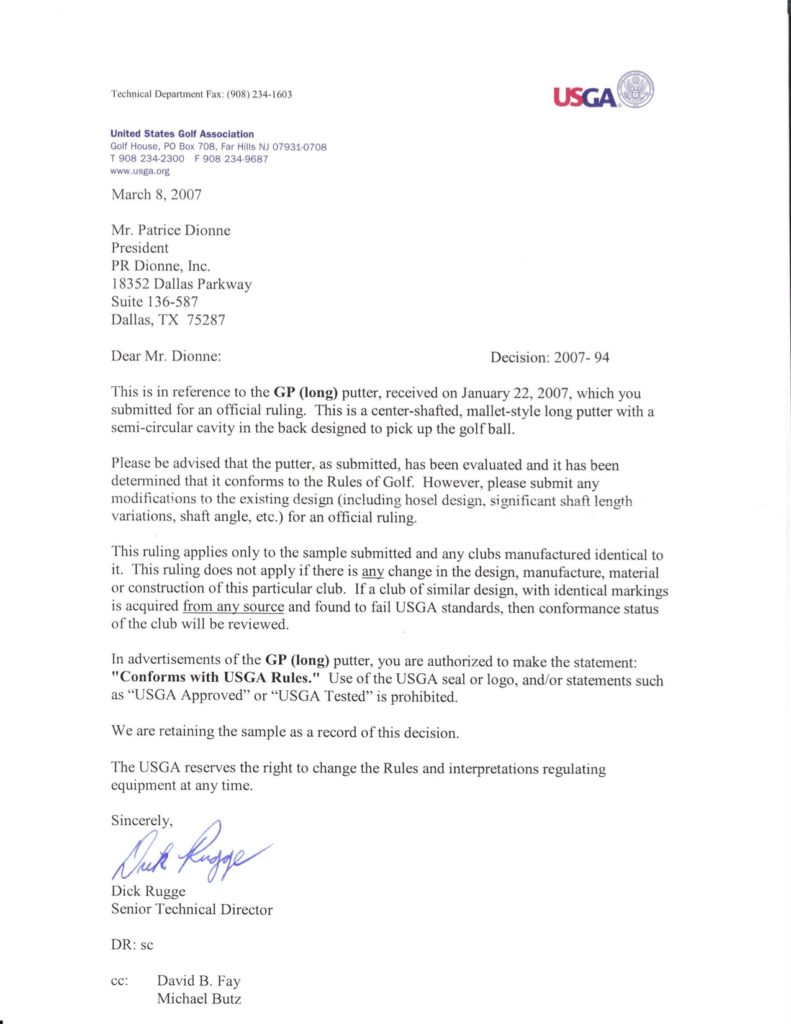How to putt with the side saddle putting stroke.
Explore more videos to see how the Side Saddle GP Putter works. Click here!
In our comprehensive tutorial, we delve deep into the art of putting with the GP putter, unveiling the secrets that set it apart.
We meticulously demonstrate the intricate details of the putting stroke, emphasizing a crucial aspect—maintaining a consistently square clubface to your target line throughout the entire process. This unique feature of the GP putter is a game-changer in the world of putting.
As we guide you through each phase of the putting stroke, we unravel how the GP putter’s design ingeniously eliminates the common pitfalls of pulled or pushed putts. The precision engineering of the putter head ensures that, from the initial takeaway to the final follow-through, the face of the putter remains steadfastly aligned with your intended target. This steadfast squareness minimizes the variables that often plague putting performance, providing a reliable and confidence-inspiring solution for golfers seeking improvement on the greens.
Through a series of expertly crafted visual aids and insightful commentary, we impart a profound understanding of the GP putter’s mechanics. Whether you are a seasoned golfer or a novice seeking to refine your putting skills, our tutorial is a comprehensive guide that unveils the nuances of utilizing the GP putter effectively.
By the end of this in-depth exploration, you will not only comprehend the technical brilliance behind the GP putter but also gain valuable insights into how it can significantly enhance your putting prowess. Say farewell to inconsistent putts and hello to a more refined and reliable putting experience with the GP putter. This tutorial is your gateway to mastering the art of putting with precision and style.
Why do top-performing golfers experience variations in their putts, unlike lower-ranked players?
Analyzing the distance performance of the leading PGA tour putter compared to the 192nd-ranked player reveals a striking 40% difference at an 8-feet range. The significance of missing a short putt, ranging from 4 to 8 feet, is comparable to the impact of your best drive of the day on your overall score. You can review the statistics on the PGA Tour website.
Traditional putting resembles placing the golf ball where a door would close, setting you up square to your target. As you swing the putter (similar to opening a door), the goal is to strike the ball at the point where the door would close, aligning it with your target line. However, even a small deviation, such as positioning the ball 1/8 of an inch (1 cm) away from the door’s closing point, can cause issues. Shifting it back by 1/8 of an inch may result in a push, while moving it forward by the same amount could lead to a pull.
Now, consider the putting stroke with a side-saddle putter featuring a straight up (plumb) shaft. In this configuration, the shaft consistently travels along your target line. Whether you place the ball 1/8 of an inch back or forward, it won’t disrupt your shot. The brilliance of this setup lies in the fact that the putter shaft always stays on the target line, eliminating the tendency to pull or push your putt.




